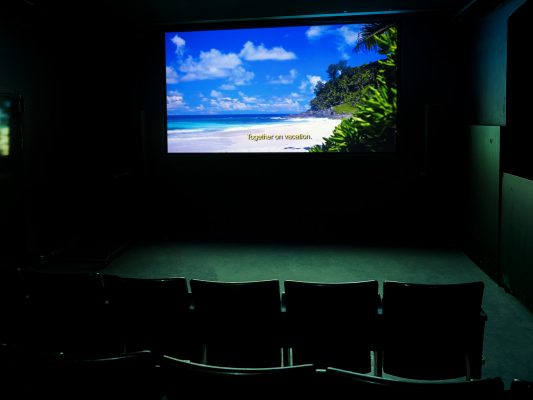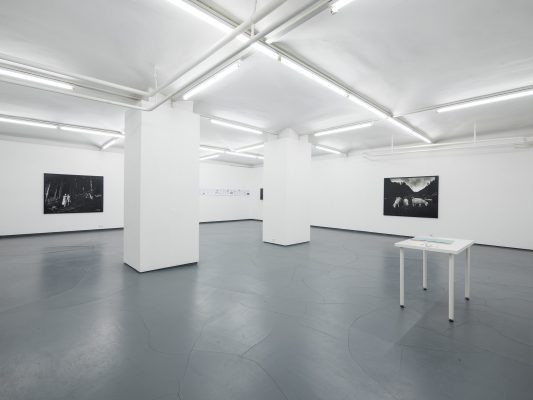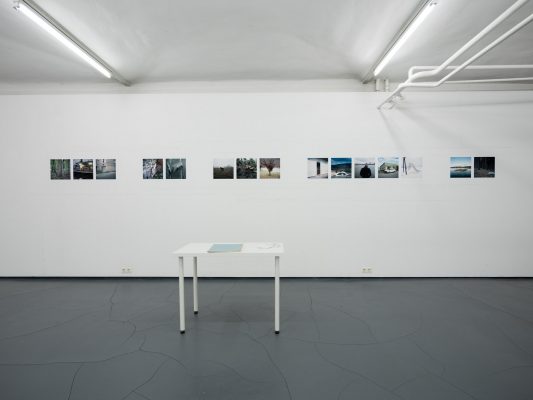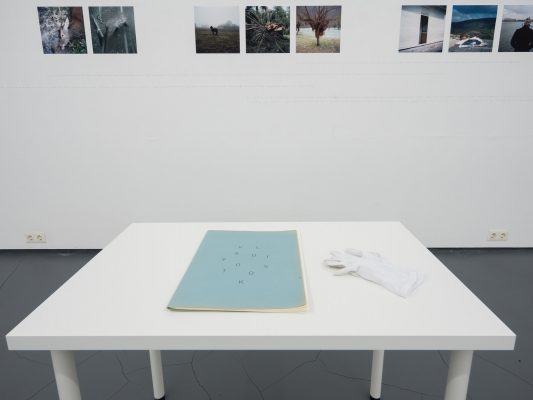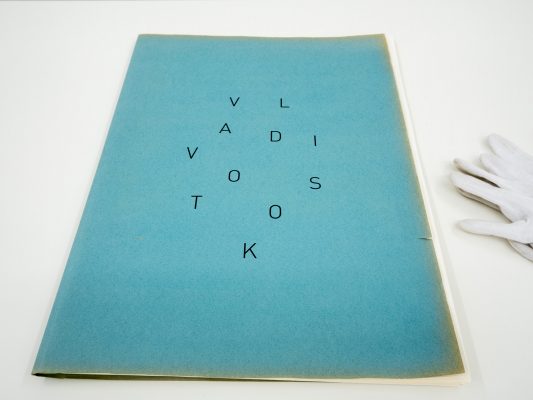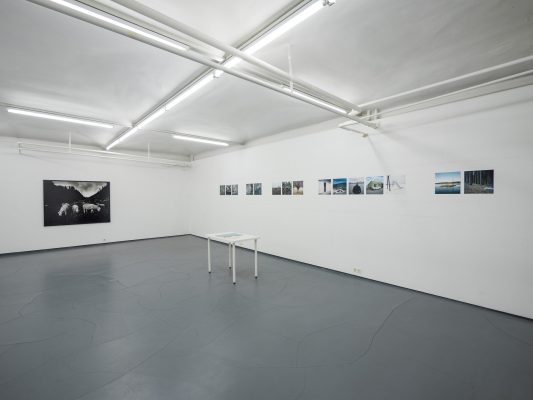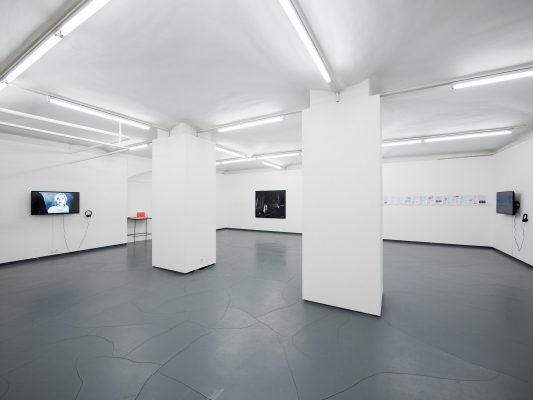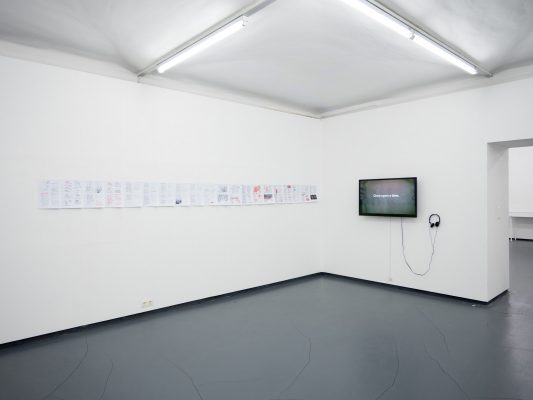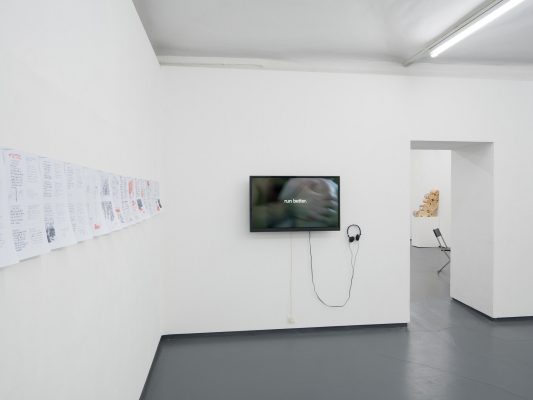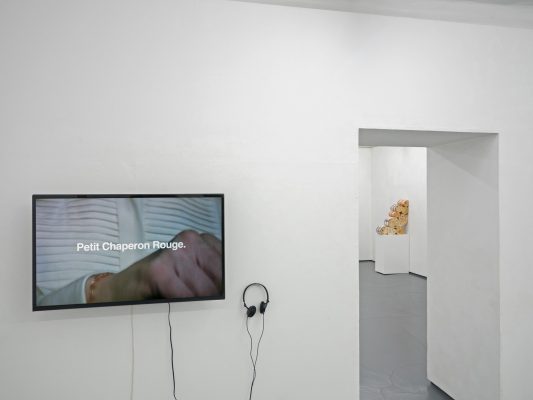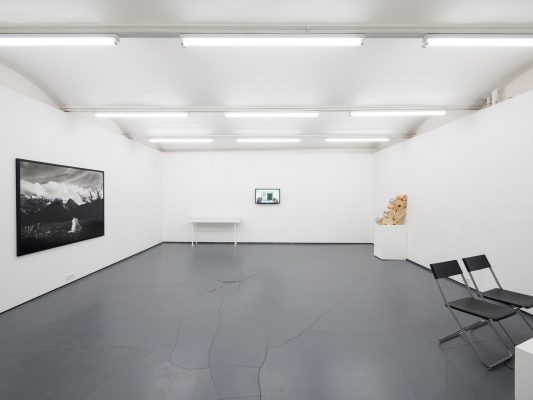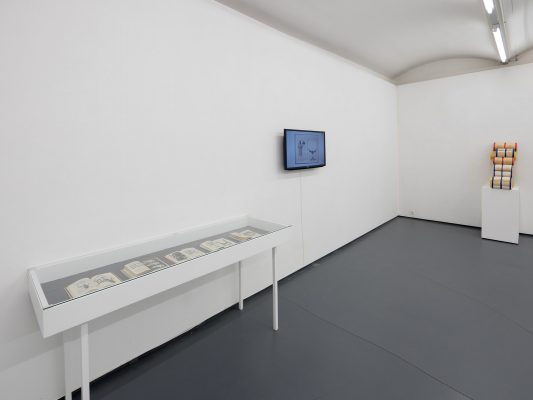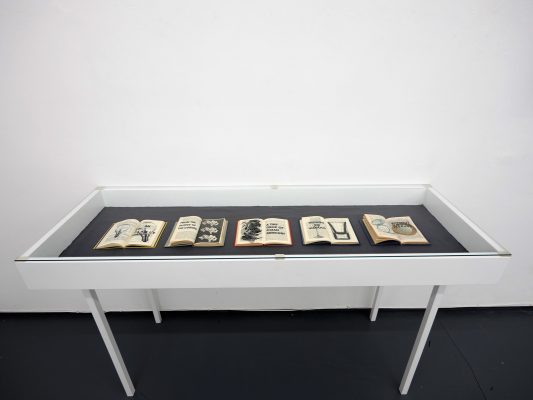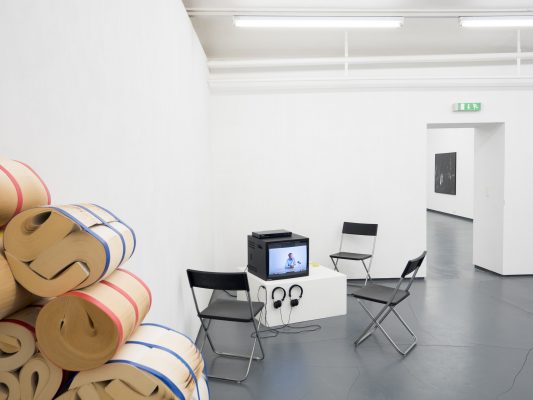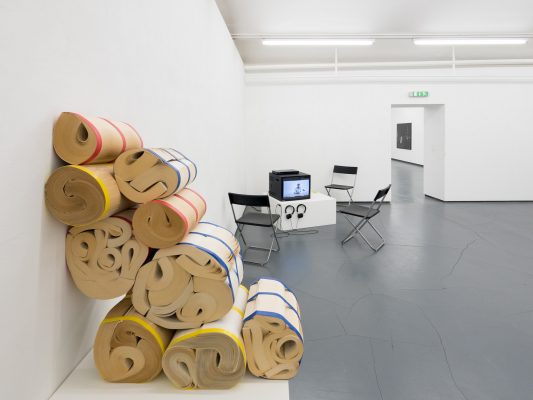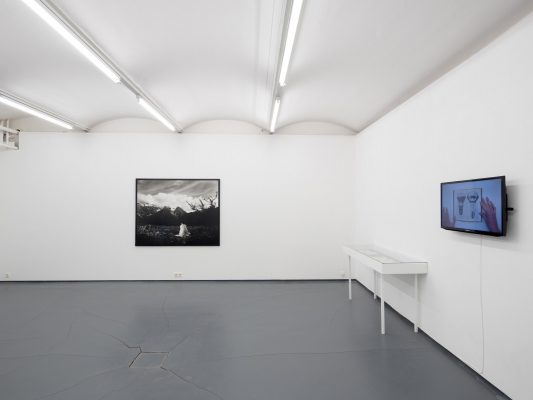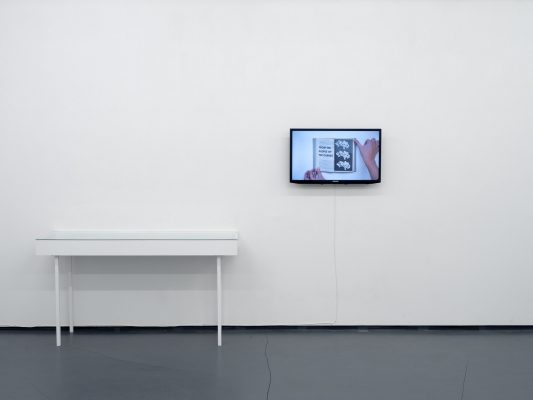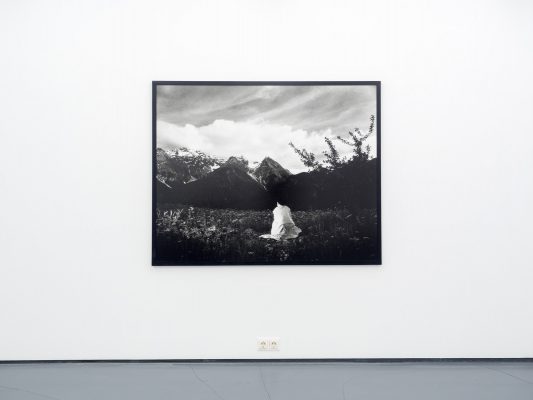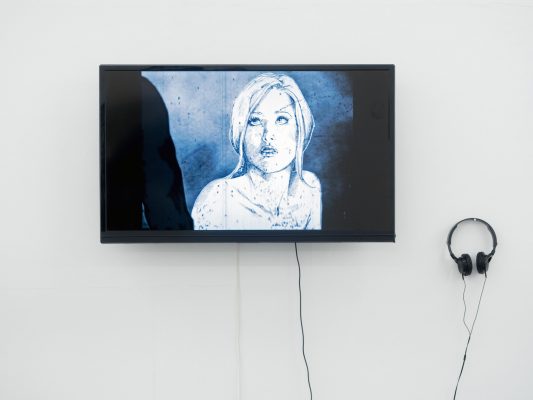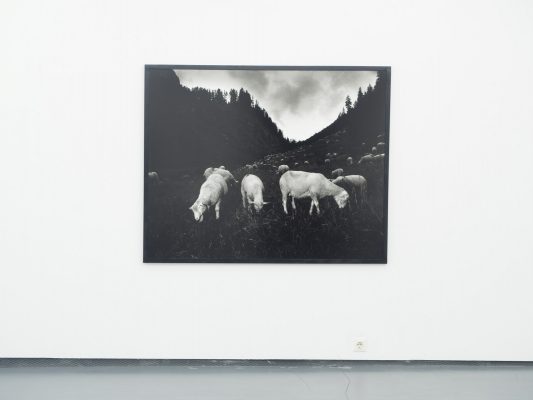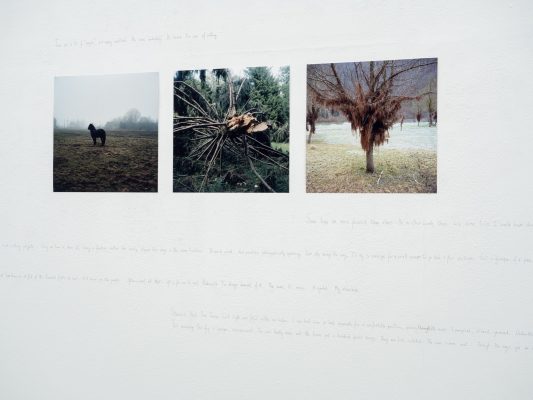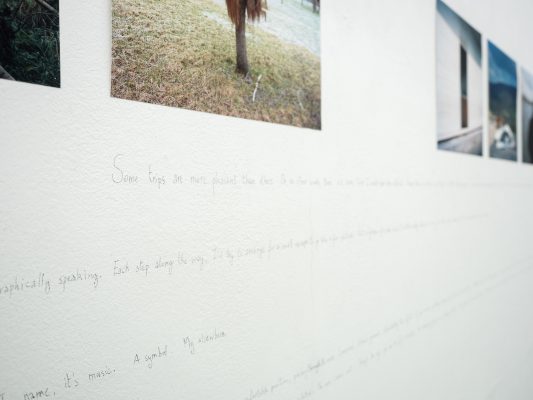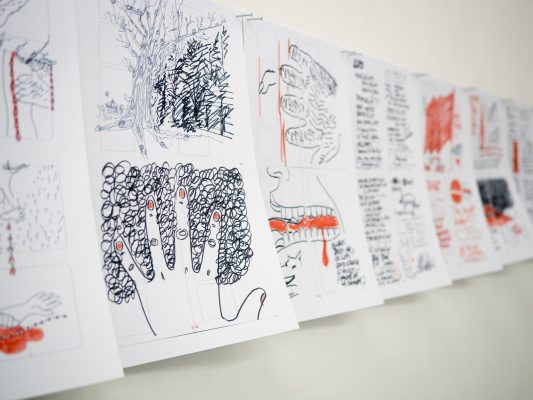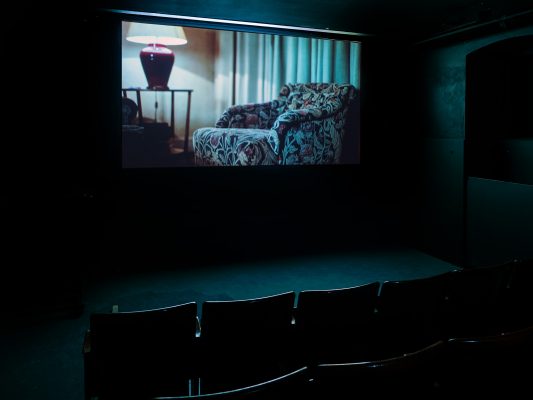Opening: Monday, 23 November, 7 p.m.
Introductory talk: Annika Lorenz
Finissage and Catalogue Presentation TEXT:IMAGE / IMAGE:TEXT: Thursday, 14 January 2016, 7 p.m.
sponsored by: BKA Kunst; MA7-Kultur; Cyberlab; Bezirkskultur Alsergrund. Thanks to: Michael Goldgruber and Lucas Cejpek
Humans have a multi-facetted apparatus at their disposal to express themselves. One of the very first means of articulation – the body – has been continuously supplemented (and in some areas replaced) by systems of symbols or images. In addition to images it has been (and is) language together with its graphic forms that provides the main structures of communication, agency and depiction. For that reason the semiotic analysis of the stimulating and exciting interrelationships of these two specific codings is a field that repeatedly surfaces in art. This is concerned with its social surroundings, special characteristics and own position within this nexus. The art works have to be continuously re-assessed in the light of their connections with questioning the media specifics within this context. The FOTOGALERIE WIEN will be presenting art works connected to this year’s special focus Text:Image/Image:Text which are concerned with these complex inter-relationships and their conditions at the same time as the curatorial collective guides the emphasis towards three sub-topics: Transformation, Symbiosis and Inspiration.
After Transformation and Symbiosis – as they apply to the mutual influence of textual and image systems – this year’s special focus comes to a close with the subject of Inspiration. In this show the artists employ various approaches to engage with direct connections between text and image. Alongside classic literary genres such as poetry, fairy tales and myths, the focus is also on accounts of everyday life as well as considering questions of media implementation and the effects of the resulting developments on the narrations and pictures. The artists recontextualise or imbue them with additional discourses by interpreting, reflecting and translating them into the different mediums of photography, video, animated film, wall installation or sculpture.
In the video work, Petit Chaperon Rouge (Wolf-dating) (2009), by Carla Della Beffa, everything turns on the interpretive transformation of a literary subject. Just as in the Grimms’ “Little Red Riding Hood”, the girl meets the big bad wolf that eats her up. However, the artist orientates herself on a more brutal version of the fairytale specifically Charles Perrault’s film. The multi-layered medium version of the encounter of the two protagonists assigns a more differentiated meaning to the narrative. The layering makes it possible to construct one’s own story which uses the audience’s collective knowledge and directly integrates it. The source material then becomes the basis for further discourses about eating, sexuality and gender roles. Here, the superimposed writing indicates the intention, linking or emphasising the visual images and encouraging a new approach to reading the fairytale.
Olivier Cornil’s work, Vladivostok (2003 – 2013), connects a selection of images of different journeys with his own text material into a book format. The texts were written parallel to the taking of the images and can thus be regarded as supplementing them. Because they are not ascribed to specific images, they do not inscribe content into any of the individual pictures but, because of their momentary character, they tend to underline subjective perception. The only indication of place is the title – Vladivostok. However, neither images nor texts come from there because Cornil was never in the city. Thus the title of the book is not linked to its contents but stands instead as a symbol of arousing curiosity in the unknown, of subjective imagination. It is an invitation to the viewer/reader to join in his journey.
Paul Drogla is also concerned with a mysterious figure in his work Metamorphosen des Vampirs [The Vampire’s Metamorphoses] (2007–10). The piece is based on Charles Baudelaire’s poem of the same title from “The Flowers of Evil”. He quickly works through the vampire’s metamorphoses employing the figure of a femme fatale and uses various animation techniques in overlays. The interplay of gender stereotypes and their transformation and dissolution, the proximity to film noir, and the oppositional use of black and white indicate recurring polarities which have appeared throughout film history. And, finally, the video is the visualised form of a subjective way of reading a literary text, something that also occurs repeatedly in the world of classic films.
Thomas Garcia’s piece, Verzichte von der Liebe. Ein Bildband also allows us to see a reduction to interpretation and the suspension of syntax and grammar. The initial material is a volume of poetry by Erich Fried which undergoes a process of reinterpretation during its digitalisation. The image files are processed by an automated optical character recognition programme. The resulting fragments are re-interpreted by the artist and, in the video, he alternates between interpreted and fragmented versions of the poem. These processes of translation and the re-ascription of meaning apply to both the content and the medium itself and elucidate the difference between the technical and a subjective meaning of textual fragments. The imprinting that takes place in the computer programme or in the development of the individual are given emphasis thereby.
In her work – Dipole Moments (2010), Logic in Practice (2012), Applications of Interferometry (2014), Glass (2013) and Magnetism (2013) – Rowena Hughes deconstructs old science books by reworking them with drawings, photographs or images found in the internet using various printing techniques. Following this, the pages, in their original form, are re-inserted in the initial book bindings. The different materials and their layering are a formal indication of the relatively unstable linkage between text and image in digital form compared to the analogue. The linguistic ready-mades suspend the original reading direction, creating space from fragmentation and underlining the ambiguity of the medium. The spatial and haptic qualities are particularly evident in Undue Flexure (2015) in which the development from readable contents to kinetic potential and object character reveals a special quality.
In contrast, Sven Johne’s work Jutta (2014) deals with a true story. The film plays on a South Sea island; it is based on the life of the German-Brazilian financial entrepreneur, Eike Batista who, as instigator of lucrative oil and gold trades once became the seventh richest man in the world. In the end he failed with his bogus projects in Brazil. The biographical mono/dialogue that his mother engages in with an absent housekeeper contrasts the mother’s real world with the son’s positivist illusory one. This difference is emphasised by drawings in the film that can be read as a metaphor for the uncoupling of the global finance market from reality. The film is not intended as a documentary but, rather, as an interpretation of a found subject and thus Johne is also questioning the authenticity and evidential character of the medium.
Corinne Rusch’s photographs are concerned with tales of nature in various countries. The short stories are based on fantastic events which are structured like reports of real events. In her work she visits the real places which appear in the story, she stages interpretive excerpts from them there and realises them in a black and white misty ambience – sombre, with a touch of mystery. The formal execution of this on-going series represented here by examples made in Switzerland, allows one to get an idea of the primal fear that is conveyed through the legends. In this work the medium of text is relegated to the background and opens the images for the viewer’s own narratives.
(textual support: Annika Lorenz)
